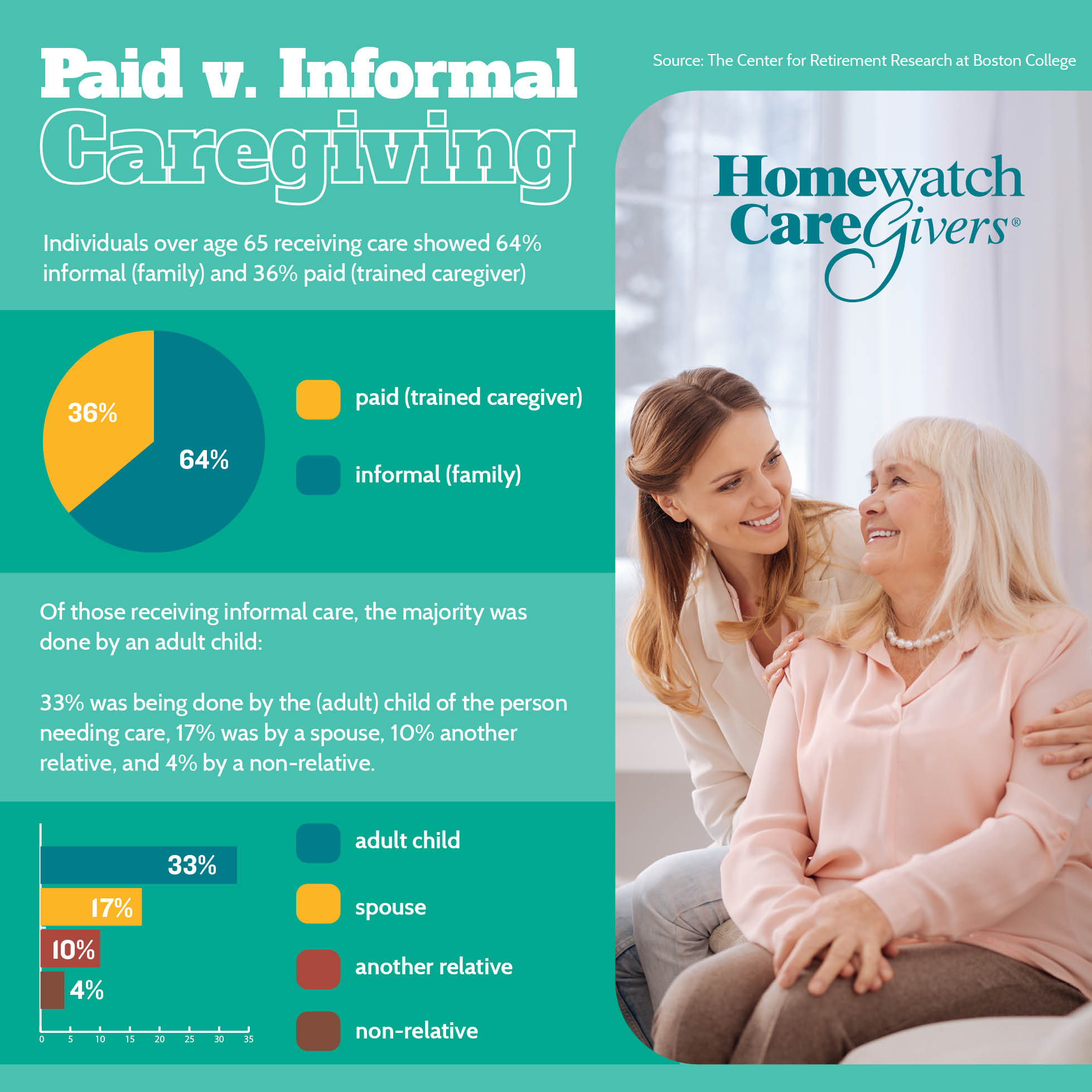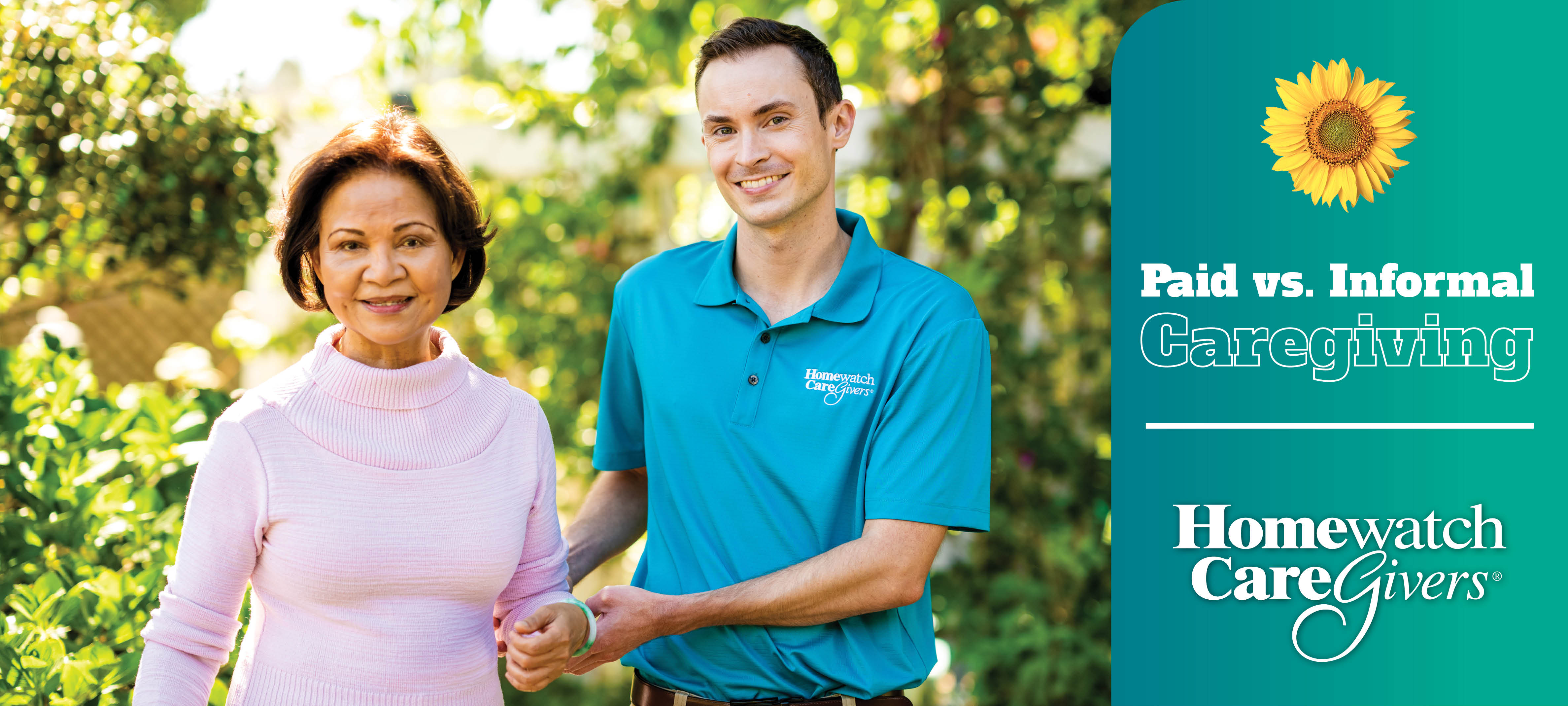When someone needs assistance with their daily needs and activities, there are basically two options: rely on a trusted and able family member or pay someone who is trained in caregiving.
Within these options are considerations from comfort to price, as well availability, dependability, insurance, and more. Even for people who move to independent or assisted living facilities or communities, there is often still a need for various support from a family member or additional caregiving for things like assistance with bathing, transportation and other daily activities.

Who Needs Caregiving Support?
The Center for Retirement Research at Boston College did an analysis in 2021 that found “one-fifth of retirees will need no support at all, and about one-quarter will have severe needs, with the rest facing low to moderate needs.”
In addition, this research found that, “those who are married, better educated, white, or in better health have more manageable needs.”
In the report, “What Resources Do Retirees Have for Long-Term Services & Supports” by Anek Belbase, Anqi Chen and Alicia Munnell, it was determined that the total number of caregiving hours provided to individuals age 65 and over was 64% informal and 36% paid. Of the 64% of informal care, 33% was being done by the (adult) child of the person needing care, 17% was by a spouse, 10% another relative, and 4% by a non-relative.
Also, of those getting paid caregiving support, 22% were using Medicaid to pay for the care, 8% were paying out-of-pocket, 4% were using some type of insurance such as long-term care insurance, and 2% were “other.”
As of the 2020 U.S. Census report, the population of people age 65 and over has grown rapidly to become the largest population segment in the country. This means that there will be more and more people possibly in need of care as they age. The Home Care Association of America’s “The Value of Home Care” report found that, “nearly 70% of Americans who reach 65 will be unable to care for themselves at some point without assistance.”
Have a Caregiving Plan
In a 2021 University of California San Francisco 2021 study it was discovered that people who live alone can significantly shorten their institutional recovery time if they have someone they can rely on at home to care for them. The fact that the majority of participants in the study expressed a preference to recuperate at home rather than facility was not news, but the lack of who that might be was surprising to researchers.
“Among the older adults living alone, 38 percent were unable to identify a friend or family member to help them in the event of a serious health issue,” the study noted.
While accidents or illness can strike at any age, living life at an advanced age can sometimes make people more vulnerable to things like breaking a bone in a fall or developing a chronic condition. When these things happen, additional support is typically needed during recovery or as symptoms progress.
While informal care might be ideal for those with strong friend and family connections who have the time available, it can be beneficial to research professional home care options in your area so that if health conditions change, there are choices to rely on. Sometimes individuals find a mix of informal and paid caregiving can relieve stress on friends and family while also keeping costs in check.





